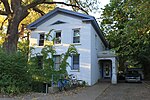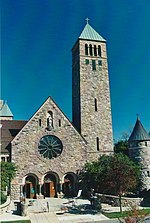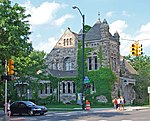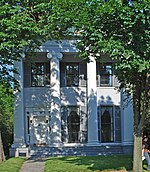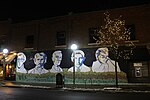Michigan Cooperative House
1932 establishments in MichiganCooperatives at the University of MichiganCooperatives based in MichiganHouses in Ann Arbor, MichiganSocialism in Michigan

Michigan Coöperative House was founded in 1932 as Michigan Socialist House. It was located at 335 E. Ann Street in Ann Arbor, Michigan, near the University of Michigan campus, and now is located at 315 N. State Street. It is one of the co-op houses making up the Inter-Cooperative Council. In 2016 Michigan Cooperative House and the neighboring Minnies Cooperative House voted to combine the two coops and become one functioning, democratically run cooperative.
Excerpt from the Wikipedia article Michigan Cooperative House (License: CC BY-SA 3.0, Authors, Images).Michigan Cooperative House
North State Street, Ann Arbor
Geographical coordinates (GPS) Address External links Nearby Places Show on map
Geographical coordinates (GPS)
| Latitude | Longitude |
|---|---|
| N 42.2835 ° | E -83.7412 ° |
Address
Michigan Cooperative House
North State Street 315
48104 Ann Arbor
Michigan, United States
Open on Google Maps
